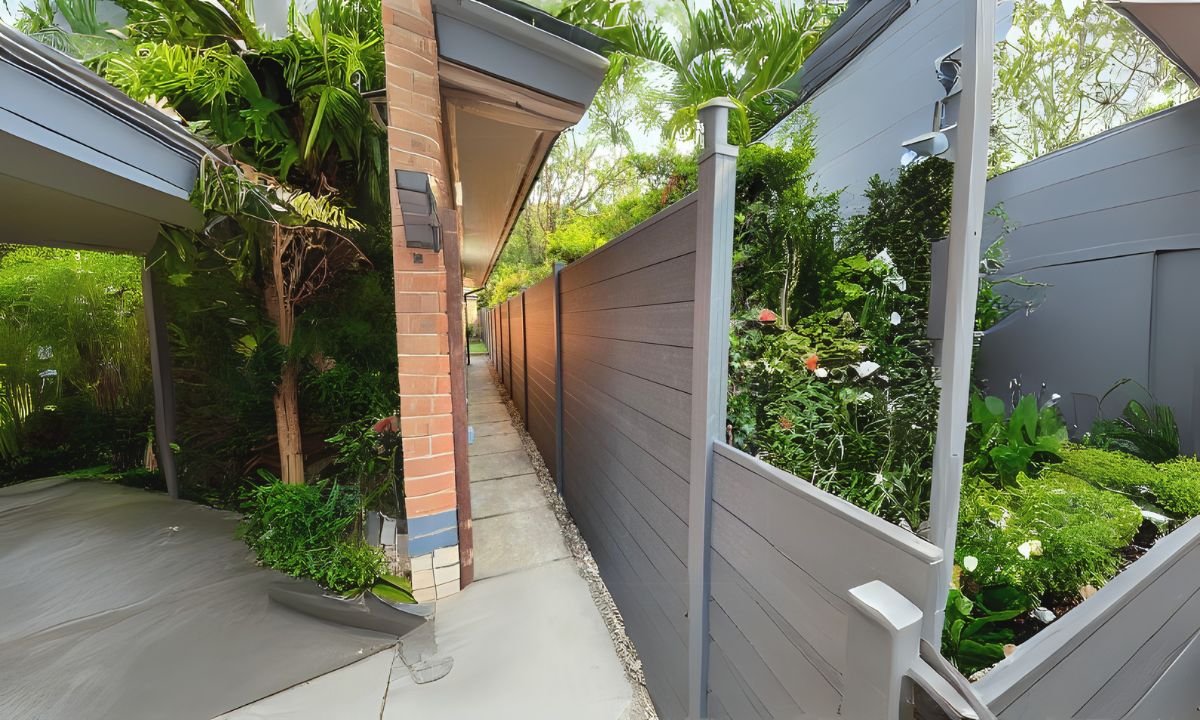Eco-Friendly Fencing Guide: Embracing Sustainability

The word 'eco-friendly' is everywhere. What does it actually imply, though, and how can we alter our surroundings in a way that will benefit the earth?
There are several advantages to recycling, using eco-friendly cleaning products, carpooling, or walking rather than driving. When it comes to establishing a new fence or upgrading your old one, you can also think about how the material you select will affect the environment.
Why Choose Eco-Friendly Fencing?
Environmental Impact of Traditional Fencing
Conventional fencing materials like vinyl, pressure-treated wood, and concrete contribute to deforestation, pollution, and increased carbon footprints
Sustainability Benefits:
Eco-friendly fencing reduces reliance on non-renewable resources, supports responsible manufacturing practices, and helps maintain biodiversity
Environmental Impact of Traditional Fencing
Carbon Footprint Reduction
Sustainable fencing materials, like recycled or renewable resources, contribute to reducing greenhouse gas emissions during production and disposal.
Waste Reduction:
Recycled and biodegradable fencing options help divert waste from landfills, promoting a circular economy and reducing landfill overcrowding.
Long-Term Durability
Eco-friendly fencing materials tend to be more durable and require less maintenance, reducing the need for replacements and conserving resources in the long run.
Aesthetic and Functional Appeal:
Eco-friendly fences offer a natural look that blends well with outdoor spaces while serving practical purposes like privacy, security, and boundary setting.
Supporting Green Building Practices
Choosing eco-friendly fencing aligns with sustainable architecture and landscaping practices, contributing to a home or business that supports the environment.
Regulatory Compliance
Some local governments and building codes encourage or mandate the use of sustainable materials, making eco-friendly fencing a more attractive choice.
Cost Savings in the Long Run
While some sustainable options may have a higher upfront cost, their long lifespan and low maintenance needs result in overall savings over time.
Environmentally Friendly Fencing Options
Wooden Fencing from Sustainable Sources

Material: Reclaimed wood, or wood from FSC-certified forests.
Benefits: Wood is a renewable resource, and using reclaimed or responsibly sourced timber helps conserve forests and reduces waste.
Considerations: Ensure that the wood is treated with non-toxic preservatives if necessary, as harmful chemicals can leach into the soil.
Bamboo Fencing

Material: Bamboo.
Benefits: Bamboo is one of the fastest-growing plants in the world, making it a highly renewable and sustainable material. It’s strong, durable, and lightweight.
Considerations: Bamboo can be susceptible to pests and may require some maintenance.
Composite Fencing

Composite fencing is a well-liked choice that combines plastic and recycled wood fibers to produce a long-lasting, low-maintenance substitute for conventional vinyl or wood fences. It blends the durability and strength of synthetic materials with the visual appeal of wood.
Benefits of Composite Fencing
- Durability
- Low Maintenance
- Environmentally Friendly
- Aesthetic Appeal
- Strength and Stability
- Resistance to Mold and Mildew
- Safety
Living Fences (Hedges or Green Walls)

Material: Plants like ivy, privet, or native shrubs.
Benefits: Living fences offer natural beauty and help improve air quality, reduce noise pollution, and promote biodiversity. They are perfect for creating privacy while maintaining a natural look.
Considerations: They require regular maintenance and may not be as solid as other materials.
Stone Fencing
Material: Locally sourced stone, such as granite, limestone, or fieldstone.
Benefits: Stone is durable, long-lasting, and requires very little maintenance. It also blends well with natural landscapes.
Considerations: Stone fences can be expensive and labor-intensive to install, but their longevity makes them an environmentally friendly choice in the long run.
Recycled Metal Fencing
Material: Recycled aluminum or steel.
Benefits: Recycled metal fencing is highly durable, low-maintenance, and can be a good option for modern or industrial designs. It’s also resistant to rust and corrosion.
Considerations: Some metal fences can be energy-intensive to manufacture, but using recycled metals reduces this impact.
Cob Fencing
Material: A mix of clay, sand, and straw.
Benefits: Cob fences are built from natural, locally sourced materials and are highly energy-efficient. They have a rustic, earthy appeal and are great for natural or rural settings.
Considerations: Cob can be labor-intensive to build and may not be practical for all climates or locations.
Recycled Wood Pallet Fencing
Material: Old wooden pallets.
Benefits: This is an inexpensive and sustainable option for creating a rustic or industrial look. It reduces waste by repurposing old pallets.
Considerations: Pallet fences may not be as durable or secure as other options and might require some DIY skills to assemble.
Cork Fencing
Material: Cork, typically harvested from cork oak trees.
Benefits: Cork is a renewable resource that doesn't harm the tree during harvesting. It's light, durable, and offers a unique look.
Considerations: Cork fencing may not be as common or widely available as other materials.
Recycled Rubber Fencing
Material: Recycled rubber (usually from tires).
Benefits: Rubber fencing is durable, weather-resistant, and made from recycled materials. It’s low-maintenance and can be molded into various shapes and sizes.
Considerations: It may have a less natural appearance and can be more expensive than wood or bamboo.
Tips for Choosing Environmentally Friendly Fencing
Local Sourcing:
The closer the materials are sourced to your location, the less transportation is needed, reducing the carbon footprint.
Durability:
Longer-lasting materials will reduce the need for repairs or replacement, which helps minimize waste.
Maintenance:
Choose materials that are easy to maintain without relying on toxic chemicals or excessive energy usage.
Conclusion:
The Future of Eco-Friendly Fencing
Purchasing eco-friendly fencing is a great way to extend the life of your property and support environmental sustainability. In addition to lowering your carbon footprint, using materials like bamboo, recycled plastic, or composite wood will result in a fence that is more aesthetically beautiful, long-lasting, and reasonably priced. Eco-friendly fencing alternatives are becoming more and more popular as more households adopt sustainable living habits, giving you a wide range of options to meet your demands.
fgvdsu
